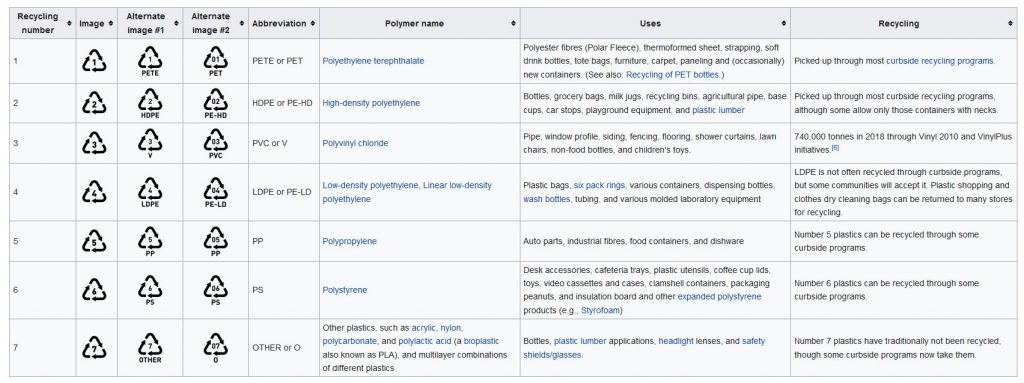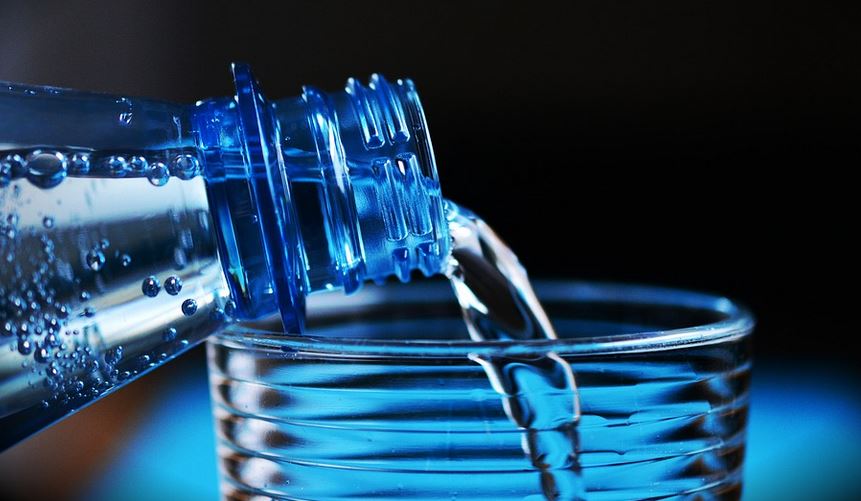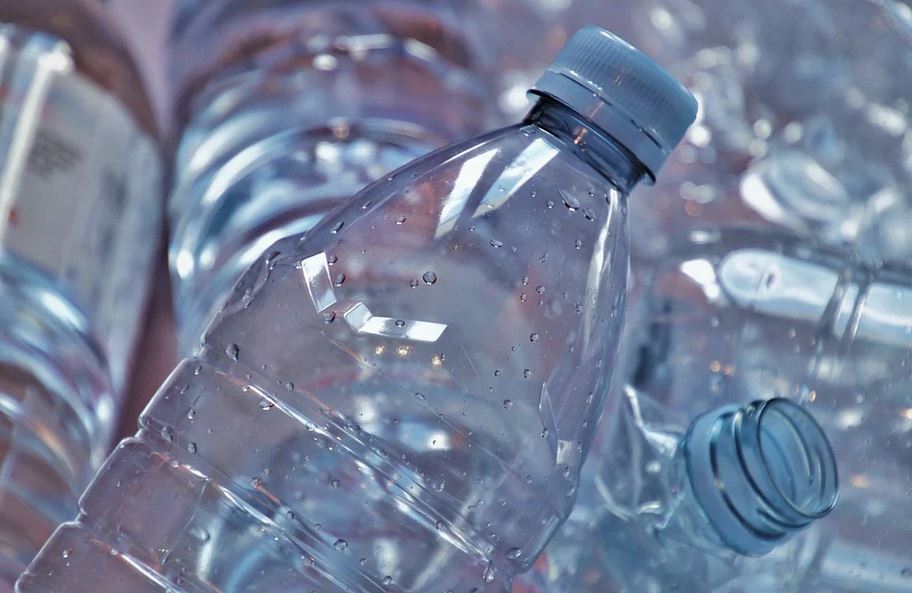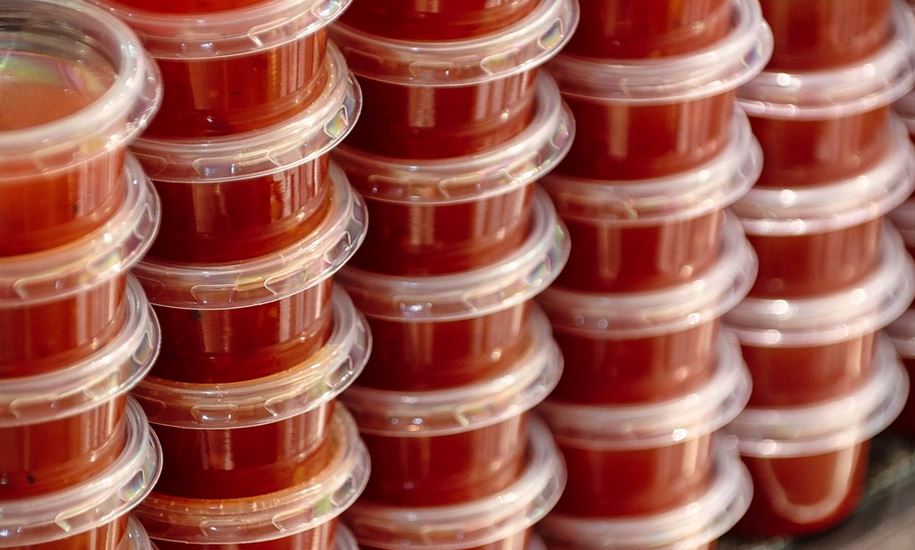Using Safe Plastics for Hydroponics and What to Avoid!
by Kevin
Since many of my readers have asked me the same questions over and over regarding plastics and hydroponics, I decided to write a pretty in depth article explaining clearly which plastics are safe to use in not just hydroponics, but gardening overall and which ones you should completely avoid.
The problem arises from all of the different plastics and the not so obvious labeling of the different types. Then of course understanding each of them and their individual properties. This guide will “hopefully” answer all of your questions, and in just a few minutes you’ll be an expert of plastics and gardening.
Did you know there are 7 distinct plastic types that are branded? On the plastic products you use, if you’ve noticed a small triangle with a number denoted on it, then you have an idea of what I’m saying.
Here’s a rundown of the different plastic types, the products that use it, and whether it’s safe for usage in the garden.

Plastic Type 1 – PET

Plastics denoted with the number 1 (in the little triangle) are created from Polyethylene Terephthalate or PET. It’s among the most frequently used plastics for foodstuffs such as peanut butter jars, soda bottles, or like in my case, jars of ghee I use to cook.
One of the characteristics of this plastic type is that it takes on the odor of the food item kept in it. Also, PET plastics are manufactured to be used once and then recycled. They are not meant to be used for extended periods of time.
It’s among the most frequently recycled plastics and is almost entirely utilized for replaceable items as it can crack up when exposed for extended periods to heat or light.

Taking that into account, that suggests that it may not be an ideal option for your garden, considering how gardens are naturally exposed to heat and light most of the time.
Things may probably pan out just fine, but why should risk the chances of a leakage occurring, especially when you have a soil-free structure, which means that the seeped chemicals will go directly into your reservoir instead of the little soil near the plastic.
Verdict: Although it’s fine to use, there are superior plastic options out there! If you were to use this type of plastic, you’d need to be replacing your parts far quicker than if you used a more durable option. Of course that equates to time and money in maintenance not to mention if something dramatic happened and you lost all of the water in your system.
Plastic Type 2 – HDPE
Plastics denoted with the number 2 are fabricated from High-Density Polyethylene. HDPE is almost everywhere, from detergent bottles or milk jugs. It’s among the safest and finest plastic types for food consumption given how it’s resistant to UV rays and exceptionally tolerant to heat ( -148 to 176 F / -100 to 80 C ). Due to this, it’s a great option for the garden.
Verdict: Extremely safe, doesn’t spread any chemicals into food or soil. And unlike Type 1 it is much more flexible and easier to work with which makes it perfect for making gardens like hydroponic tree systems. A great option for the garden.
Plastic Type 3 – V
This plastic type is denoted by the number 3 and is created from Polyvinyl Chloride, popularly referred to as PVC. Among the top known plastics, PVS appears in salad dressing bottles, plastic pipes, liquid detergent containers, and is used for irrigation.
The majority of PVC products have chemicals referred to as phthalates, which fundamentally assist the PVC to be more flexible, durable, etc – all the properties we affiliate with plastic.
But not all PVC is bad. A few variants of PVC are safe for hydroponic gardens. These are uPVC or Rigid PVC.
Although this is excellent for fabricating PVC, a good building component, phthalates are not necessarily good for the human body. As a matter of fact, many of us have small amounts of phthalates in our urine as a result of leakage, although the CDC claims our diet and dust is the underlying reason why phthalates can be found in our system.
Because of this, you should strive to keep away from PVC structures in your garden. It may appear like an attractive and affordable plastic option for your garden, but if you care about your overall well-being and health, go for an alternative plastic type.
NB: not every type 3 plastic utilize phthalates, which means some PVC products are OK to use – but you should ensure that no phthalates were utilized as a plasticizer.
Verdict: We already have plenty of phthalates in our lives, so why should you use a material known to leak them? Stick to uPVC or Rigid PVC to be safe!
Plastic Type 4 – LDPE
Plastics denoted with the number 4 are created with Low-Densidy Polyethylene. Products that utilize LDPE include food storage containers, trash can liners, and plastic produce bags.
Can you see a trend? Plastics to store food are generally safe to garden with. Like its counterpart HDPE, the LDPE plastic type is extremely safe when exposed to a range of temperatures and can even be placed in the microwave. What’s the conclusion? It’s an excellent option for the garden.

Verdict: Extremely safe and doesn’t transfer any chemicals into food or soil. A great option to garden with and usually found in the best hydroponic systems available.
Plastic Type 5 – PP
Plastics denoted with the number 5 are created from Polypropylene. Frequently utilized in products that need injection molding such as food containers, bottle caps, or straws. Although it’s not entirely tolerant to heat as compared to LDPE or HDPE, it’s mostly safe for garden and food usage.
There are minor trepidations regarding leakage that sprout up after Canadian scientists discovered leakage was impacting their lab work, but it’s mainly looked upon as a safe plastic type.
Verdict: A relatively decent option for garden work.
Plastic Type 6 – PS
Plastics denoted with the number 6 comprise Polystyrene. Polystyrene-based plastics have an array of applications – meat trays, plastic forks, Styrofoam cups, packing peanuts, to-go containers, etc. It’s among the most broadly used plastic type in a range of fields.
Considering how the product is expansively used, it has been subjected to numerous scientific research with regard to its safety and health. The overall conclusion is that it can be in foodstuffs without compromising on safety, but it doesn’t mean it’s safe for garden work.
One fun fact is that foodstuffs stored in polystyrene (berries, meat, etc) all contain styrene as an organically occurring compound. Considering its broad range of usage, polystyrene continues to be a major talking subject amid scientific circles. One of the hot button topics of discussion is whether polystyrene products containing food items are safe to microwave – there’s no definitive answer to that as of yet.

All things considered, it’s a fairly decent plastic type for garden work, but my only worry is that it’s less sturdy and is a more porous material, which means it’s not an ideal structural option for garden work.
Verdict: Safety-wise, it’s fine. However, it’s not a good option for the garden structurally if you’re looking to support water or weight.
Plastic Type 7 – OTHER
Plastics denoted with the number 7 are created from any material other than the aforementioned materials listed. This typically means plastics fabricated from Polylactide or Polycarbonate. Polycarbonate is the most prevalent type 7 plastic, and at the same time among the most dangerous plastics ever made. Time and time again, it has been proven to seep BPA, which has been connected to various health complications.
One thing to bear in mind when it comes to type 7 plastic is that it encompasses any plastic that doesn’t fall under the first 6 classifications. This means there are safe plastics that can be found here, but you’ll need to conduct thorough research to ensure that you have the safe type. Even the newer bio-degradable plastics are listed under this category. So you’ll need to dig deeper on the specific brand and composition of pipe you’re looking to use.
Why should you put yourself in this situation of uncertainty when there are safer plastics you can utilize such as LDPE or HDPE? I suggest that you keep away from plastic type 7 just because there are better alternatives out there.
Verdict: There are some type 7 plastics that have BPA, a dangerous component that has been affiliated with several adverse health effects. My advice is to keep away from this plastic type.
Which to Choose?
In my opinion, I recommend LDPE or HDPE, simply because they are the safest products to use, and this fact is backed by actual scientific research. The initial cost may be a little pricey, but they have a long lifespan, meaning they can be inexpensive down the line because you won’t need to do any replacements.
Also safe is any plastic that is labeled “BPA Free” and is non-toxic. Furthermore, NSF 51 Certified Food Safe plastics are the very best for hydroponics. The problem is they cost more which is not a big deal when you’re creating a small hydroponic garden in your home. However, when it gets to industrial sized farms, there really is no better choice than PVC as far as ease and cost.
I hope this guide has provided you the information you need to make an informed decision when looking for the ideal plastic for your garden. I’m an advocate of recycling and using what you organically grow in your garden, but I don’t believe you should endanger your health and that of others who are consuming what you’re producing from your garden.
Thoughts on "Using Safe Plastics for Hydroponics and What to Avoid!"
 |
 |
 |
 |
Hydroponics Tips